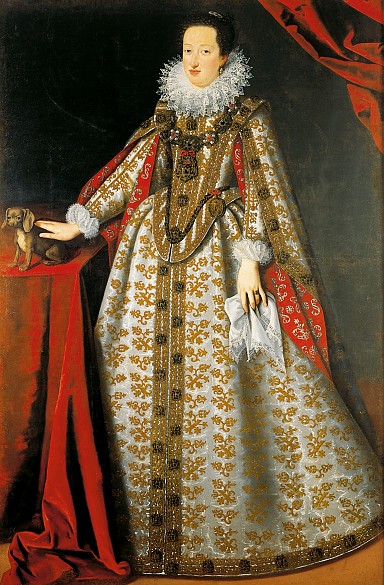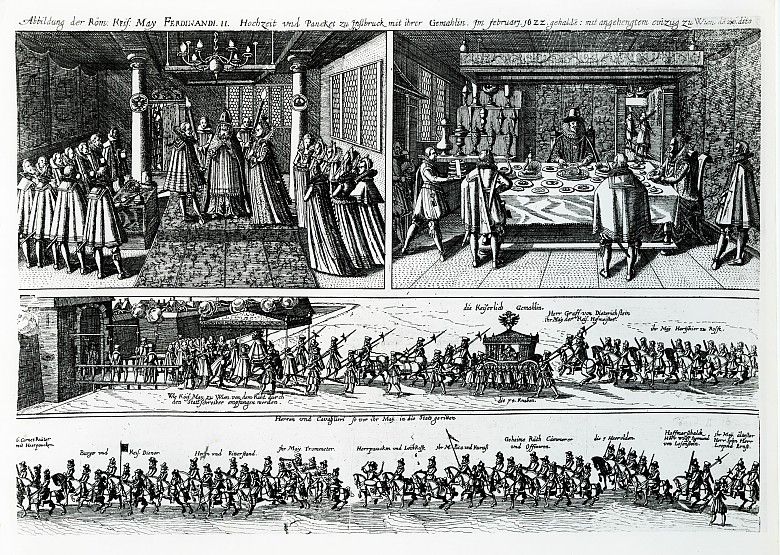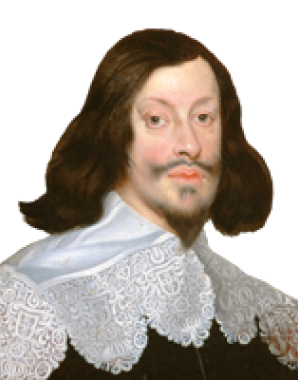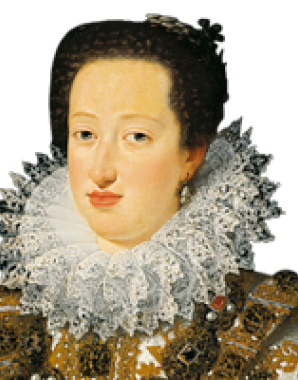Ferdinand II: marriage and offspring
Ferdinand also followed the precepts of the Catholic Church in his family life.
His first marriage, contracted in 1600 when he was still archduke and ruler of Inner Austria, was to his maternal cousin Maria Anna of Bavaria (1574–1616). A member of the Wittelsbach dynasty, she was the daughter of Duke William V of Bavaria and Renate of Lorraine. The marriage was initiated by Ferdinand’s influential mother, Maria of Bavaria, who wanted to strengthen the alliance between the Houses of Habsburg and Wittelsbach, the two leading Catholic dynasties in the Empire.
During the sixteen years of their marriage, Maria Anna gave birth to seven children. The first two children, a daughter and a son, died at birth. A further son named Johann Karl died at the age of fourteen. The first child to survive into adulthood was the fourth, a son, who was to succeed his father as Emperor Ferdinand III.
He was followed in 1610 by a daughter, named Maria Anna after her mother, who was to marry into her mother’s family. Her husband was her maternal uncle, Elector Maximilian of Bavaria, her father’s closest ally in the Empire, who was forty years her senior. Despite the difference in ages, the marriage proved a success, and the young bride gave the duke his desired successor. After the death of her husband in 1651 she reigned for her son until he came of age, remaining a politically very influential figure at the Bavarian court until her death in 1665.
A further daughter named Cecilia Renate was born in 1611 and later married King Ladislaus IV Vasa of Poland, a paternal cousin. The marriage was very unhappy. She died in childbirth in 1644.
The youngest son Leopold Wilhelm (1614–1662) entered the Church. As an important military commander and art collector he has his own biography on this site.
After the death of his first wife in 1616 the 44-year-old Ferdinand, who had in the meantime become Holy Roman Emperor, married Eleonora of Mantua (1598–1655) in 1622. His bride was twenty years his junior.
A celebrated beauty, Eleonora was the youngest daughter of Duke Vicenzo I of Mantua from the House of Gonzaga, an ally of the Habsburgs in northern Italy. The ‘elder Eleonora’, as she is known in order to distinguish her from the wife of her stepson Ferdinand III, the younger Eleonora of Gonzaga, was like her husband, extremely religious. The empress endowed a number of religious foundations as well as the ‘heart crypt’, the burial place for the hearts of the Habsburgs in the Loreto chapel of the Augustinerkirche in Vienna. Her marriage to Ferdinand II remained childless. Eleonora died in Vienna in 1655.
Eleonora’s importance for the history of the Habsburg Monarchy lay in the sphere of music. From her native Italy she brought a new kind of musical theatre to Vienna, and it is thanks to her that opera and ballet became established at the Viennese court.
















